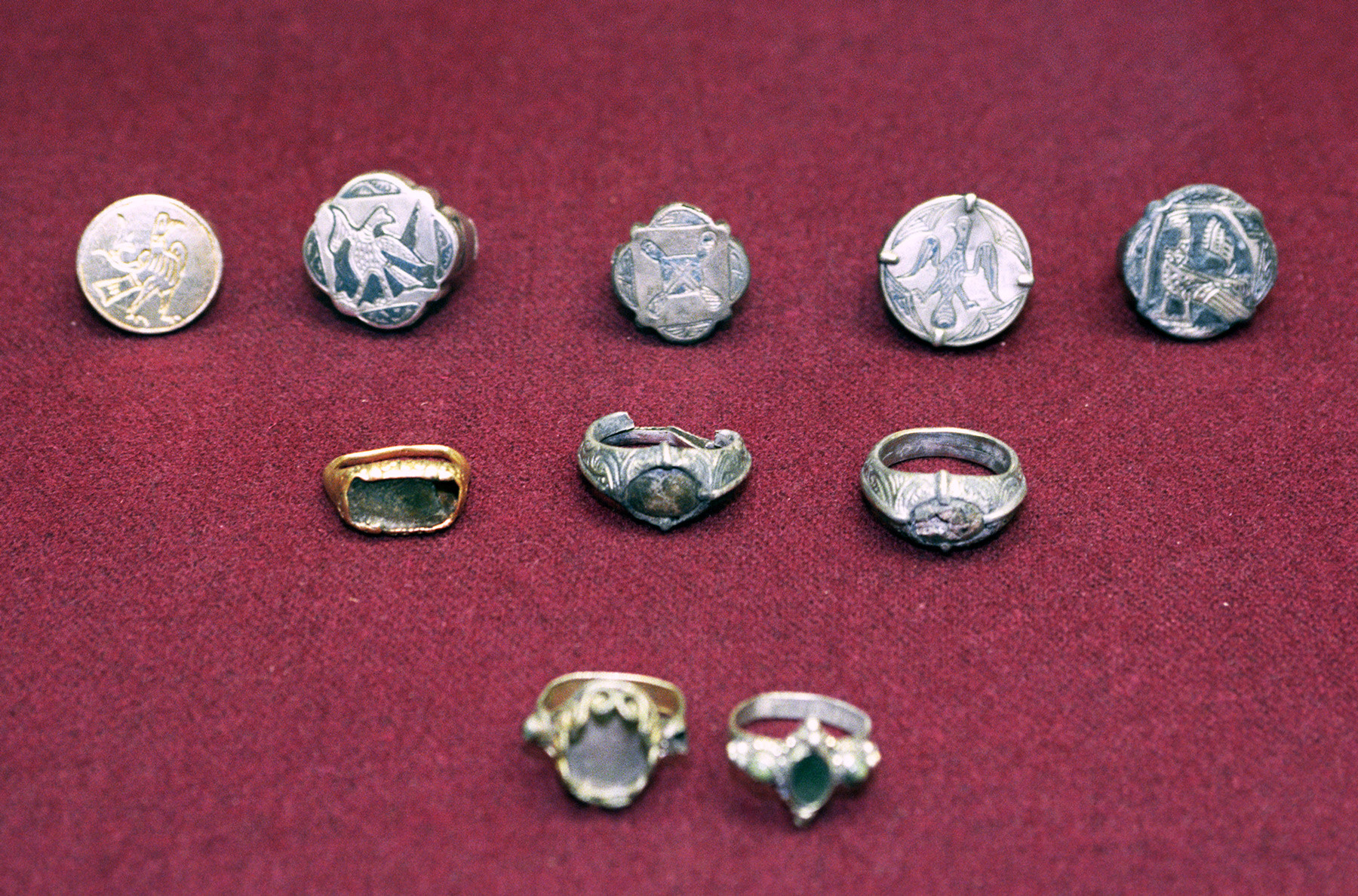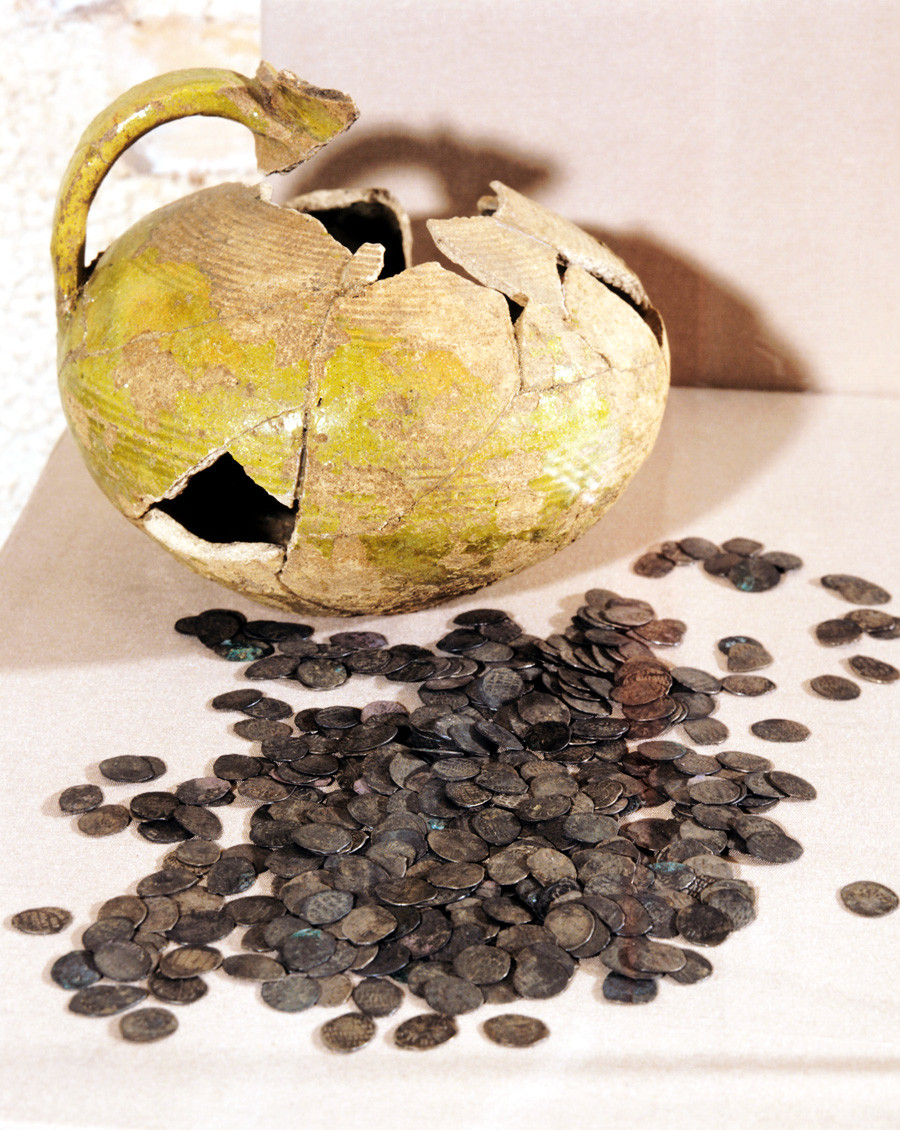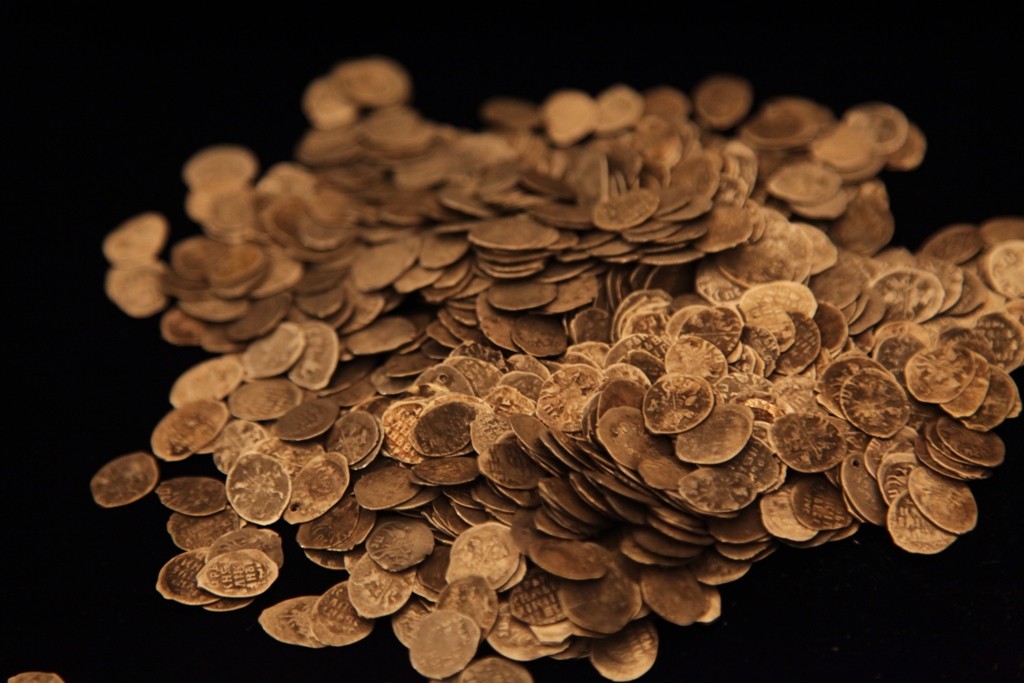5 most precious treasure hoards found in Moscow
1. Big Kremlin treasure

The find contained rare jewelry produced not only in Russia but also in Scandinavia and Persia
Dmitry Korobeinikov/SputnikTreasure has been found a number of times inside the Kremlin. However, a discovery made in 1988 was the biggest, consisting of 300 pieces that included many silver bars and jewelry items that date to around the 13th century.
The find contained rare jewelry produced not only in Russia but also in Scandinavia and Persia. The treasure allegedly belonged to a Moscow
The treasure included many rings, such as one made from gold with an inscription in Arabic: “Glory, success, power, and happiness to its owner.”
The treasure was discovered at the depth of five meters, found in what originally was a wooden chest but which after 750 years was nothing more than dust. The treasure’s historical significance is proof that around the mid-13th century Moscow was at the center of medieval Russia’s political life and played an important role in international transit trade.
2. Ipatiev treasure

The silver weighed more than 70 kilos and was hidden in the early 17th century
Vladimir Vyatkin/SputnikThe silver weighed more than 70 kilos and was hidden in the early 17th century. The treasure was found during construction in Ipatiev Lane in the city center. Historians are not sure what these coins were intended for. Probably, they were to be melted down and made into Russian coins.
3. Arabic treasure

Cathedral of Christ the Saviour in Moscow
Archive photoArabic dirhams dating to the 9th century were found in the 1830s during construction of the original Christ the Savior Cathedral. It is thought these Arabic coins were the first money in circulation in medieval Russia, and it’s reported that no less than 15 similar treasure hoards have been discovered in and near Moscow.
When the treasure was hidden Moscow did not even exist, and so some people believe that the dirhams might have been hidden on the hill slope by merchants as a precaution against an attack by brigands.
4. Almost 100,000 coins

The trove was discovered a few hundred meters from the Kremlin
Lyudmila Pakhomova//TASSThe oldest in the trove date to the reign of Ivan the Terrible in the mid-16th century, and it’s believed that the owner hid it beneath his wooden house, which burned to the ground.
5. Enough coins to build an estate

Their value at that time was about 350-380 rubles - enough to build a lavish estate in Moscow
mos.ruAnother huge hoard of coins was discovered in 2015 during construction of the new park, Zaryadye. Workers found 43,000 silver coins that weighed 20 kilos.
They were also minted close to or during the reign of Ivan the
Their value at that time was about 350-380 rubles. This money was enough to build a lavish estate in Moscow. In general, most treasure found in Moscow
If using any of Russia Beyond's content, partly or in full, always provide an active hyperlink to the original material.
Subscribe
to our newsletter!
Get the week's best stories straight to your inbox